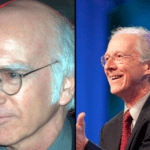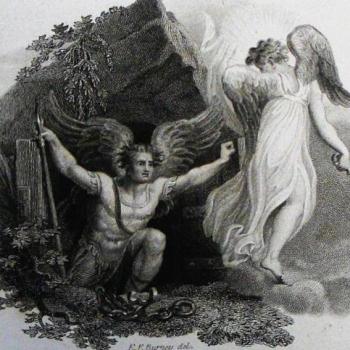
The Book of Revelation
Coming to a conclusion on the precise date that a particular book of the Bible was written is by no means an easy task. Since that is true it is a very good thing that knowing the exact date a book was written rarely plays a negative role in the books interpretation. However, as for dating the book of Revelation it is absolutely vital to our understanding of the prophecies found regarding the end times.
Many, perhaps even most, date the book of Revelation somewhere between 90 and 100 A.D. However, there is good reason to doubt this projected date. There are many capable and respected scholars and theologians who argue that the book of Revelation was written in the mid to late-sixties (Sproul, p.147). This dating has immeasurable implications for our interpretation of this important book.
If the book of Revelation was written between A.D. 90 – 100, well after the destruction of Jerusalem and the temple, it seems extremely unlikely that John would not make even a single mention of those events. Even though this point does require arguing from the silence of Scripture, as R.C. Sproul puts it, “the silence is deafening” (Ibid.). Not only is the destruction of the temple in 70 A.D. never mentioned, the book of Revelation repeatedly refers to the temple as still in tact. If this is so, then it is only logical to conclude that much of the prophecy in the book has nothing to do with a tribulation coming in our future, but with a tribulation that was close at hand at the time John penned these prophecies.
Revelation 11:1 reads, “And there was given to me a measuring rod like a staff; and someone said, ‘Rise and measure the temple of God, and the altar, and those who worship in it.'” John is portraying a picture of the temple as still being intact. A legitimate and seemingly clear possibility is that it still was intact. If the date of Revelation can be shown to be before 70 A.D., then much of the prophecy it contains clearly comes to fruition in the destruction of Jerusalem and its temple in 70 A.D.
REVELATION 7:1-8
Philip Hughes explains that “the number 144,000 stands here for the complete company of the redeemed. As with the numbers elsewhere in this book, it is a symbolic figure, and therefore should not be taken literally” (Hughes, p.94). The description of the “great multitude” and the “144,000” are of the whole group of the redeemed just from two different vantage points. When one studies the use of numbers in Scripture the fact they often are symbolic representations becomes quite evident.
REVELATION 20:1-6
As is the case with other numbers in Revelation, the period of 1000 years is symbolic of a relatively long period of time (Hughes, p.209). In fact, just off the top of my head I cannot think of a time 1,000 is used as a literal figure in the Bible.
Believing the 1,000 years to be symbolic rather than literal should not be seen as an allegorical or some type of liberal interpretation. When the book of Revelation is read and studied, it becomes quite clear that figurative and symbolic expressions are used extensively. The churches are symbolized by seven golden candlesticks. Seven spirits before the God’s throne are symbolic of the fullness of the Holy Spirit. The Lamb is described as having seven horns, but no one expects to see either a literal lamb or seven literal horns. We acknowledge that “certain numbers, certain items, and certain creatures symbolize and represent different things. It is the thing represented, and not the symbol itself, that we regard with a literalness” (Boettner, p.63). Boettner continues, “Strict arithmetic has no place here. The term (millennium) is a figurative expression, indicating an indefinitely long period of time” (Ibid., p.64).
A Peek at The Antichrist
Another identifying factor of dispensationalism, in addition to the rapture (primarily pre-tribulational), is the belief in the unveiling of the antichrist after the rapture of the church takes place. The term “antichrist” is used by John in his epistles, and he is careful to note that there are actually “many antichrists” (1 Jn. 2:18). In Revelation, the “antichrist” is called the Beast or the False Prophet. The apostle Paul also makes a similar reference in 2 Thessalonians 2:3-4 when he uses the phrase, “man of sin.”
Supposedly, while the raptured saints are in heaven, the antichrist is free to establish his kingdom, but after three and one-half years he breaks the covenant he made with the Jews and starts to viciously persecute them. Seven years after the rapture of all believers, right before the Jews are about to be over taken and completely destroyed, Christ returns, demolishes the antichrist and his followers, rescues the Jews, and sets up His earthly millennial kingdom.
One would be vey hard pressed to find many postmillennialists or amillennialists who do not believe in the existence of a personal antichrist. The difference is that post, and some amillennialists, picture believers still on earth during this time and not raptured away. Some post, and many amillennialists, believe that the “man of sin,” the “antichrist,” the “Beast” was an actual living person during the first century. As a matter of fact, the apostle John writes in the present tense when he says, “even now there have arisen many antichrists”. And Paul, writing about the “man of sin,” says that he was already working during his time (2 Thess. 2:7ff.).
What About What I Believe?
Since all of the main views of eschatology are just that, views, I personally can see some holes in each of the systems we discussed. Each system also leaves one with some unanswered questions as well. With that being said, I still believe we need theological systems. I am a strong advocate of Systematic Theology. Theological systems help us organize biblical truth. In a time like ours where Christians tend to lift single verses out of context in order to justify dubious behaviors or convictions, I think we are in dire need of theological systems. These systems keep us from viewing a single text outside of the totality of Scripture.
It is true that I admitted none of the four systems completely satisfy every imaginable question on the issue, but that does not to mean that the arguments for each position are as convincing as all the others. I think by now it is safe to say that the reader has picked up on the fact that my opinion of premillennialism, historic and especially dispensationalism, is not very high. I can honestly state that I believe dispensationalim, pre-tribulational rapturism, and premillennialism are the weakest of the eschatological positions.
Premillennialism makes the kingdom of God out to be a literal, geographical, earthly and national kingdom when the vast majority of Scripture describes the kingdom of God as being a spiritual and universal kingdom.
Premillennialism also separates the resurrection of believers from that of the unbelievers by a time frame of 1,000 years when the Scripture talks about the resurrection of both to be in a single breath (Dan. 12:2; Jn. 5:28, 29; Acts 24:15). In addition, the use of 1,000 in these passages is clearly seen as symbolic.
Premillennialism also dissects the last judgment from the second coming of Christ, but these events cannot be separated as we clearly see when we look at Matthew 16:27 and 25:31-32.
My disagreement with postmillennialism is primarly due to just one reason. There is an extreme lack of biblical evidence to support the position that the vast majority of humanity will become believers of Christ. If anything the Bible teaches the gate is “narrow.”
The only real issue I have with amillennialism is more related to an attitude that can accompany some of those who hold to this view. Whereas postmillennialism is unrealistically optimistic, amillennialism can induce in some an overly pessimistic view about the condition of the world and the success of the spread of the gospel. The reason the possibility exists for pessimism is because of the overemphasis on the “other-worldly” nature of the kingdom of God. Although the kingdom of God is indeed predominantly spiritual in nature, it does have some aspects meant for “this-worldly” applicaton as well – specifically, the preaching and successful sharing of the Gospel
.
My Eschatological Characteristic Beliefs:
- The New Testament church is the true, spiritual Israel of God (Gal.6:16).
- The millennium is the time between Christ’s ascension and His return (the second half of this statement is still a work in progress to be honest, it is possible it may include some time after His return as well).
- The millennium, as well as the “first resurrection” found in Rev. 20:4-6, describes the current reign of the souls of those believers who have died and are with Christ in heaven.
- Therefore, Christ’s kingdom already exists (Mt. 4:17, 5:3, 16:19, Mk. 9:1). It is a reality that is in operation today due to the fact Christ was, and is, victorious and is ruling His “subjects” by His Word and by the Spirit of God (Lk. 17:20, 21).
- The Kingdom of God is redemptive and spiritual in nature and not political or literally physical (Lk. 17:20; Jn. 3:3ff.; 18:36; 1Thess.2:12; Col.1:13).
- Christ’s kingdom, just like the Bible states, is like a mustard seed and leaven in dough (Mt. 13:31-33), it is growing and the Gospel is making its way into dark places. However, there will not be any kind of “golden age” where the vast majority turn to Christ.
- Christ has thoroughly defeated Satan and the powers of darkness. Satan is “bound” in the sense he cannot stop the spread of the Gospel. He is also “bound” in the sense he cannot touch one of God’s elect without God’s express permission. Even though Satan is in a sense “bound,” tares are growing along with wheat so evil will continue until Christ completely abolishes it at His second coming (Rev. 20:1-3; Mt. 13:36-43).
- The great apostasy cannot be completely viewed as a future event since Paul said that “the mystery of iniquity” which causes apostasy was already working in his time (2 Thess. 2:7ff., 1 Jn. 2:18, 22; 4:3).
- There will most certainly be a literal, physical, visible second coming of Jesus Christ. His second coming will bring about “the end of the age” and will correnate the future age after the resurrection of the dead and the last judgment has been completed.
- Christ will create a new heaven and new earth in perfect condition which will endure for eternity, often referred to as the eternal kingdom (2Pet. 3:10; Rev. 21). The new earth, often referred to by Hank Hanegraaff as Paradise restored, or Eden as it was intended to be, will be where we spend eternity with Christ in the midst of God’s glorious presence.
So, I guess if a label was forced upon me and was restricted to the main views discussed above, I suppose I would be deemed a slightly optimistic amillennialist, and I can certainly live with that.
In Closing
I think R.C. Sproul summed it up best, “Debates over eschatology will probably continue until the Lord returns and we have the advantage of hindsight rather than the disadvantage of foresight. The divisions that exist within the Christian community are understandable, considering that both the subject matter and the literary genre of future prophecy are exceedingly difficult. This does not mean that we may push the Bible aside or neglect its eschatological sections. On the contrary the interpretive difficulties . . . call us to a greater diligence and persistence in seeking their solution” (Sproul, p.203).
I might add, that while seeking a solution, we need to keep in mind that the universal Church has never forced a single one of the millennial positions into one of her articles of confession or creeds. The overwhelming, and appropriate, position has been to embrace all as Christians as long as they can confess the visible return of Jesus Christ (along with other criteria not pertinent to our current topic). So even though we may hold our own personal eschatological positions definitively and defend them vigorously, we need to remember to live by the creedo attributed to St. Augustine, “In essentials, unity; in non-essentials, liberty [freedom, grace]; in all things, charity [love].”
Also In This Series
- A Look at Eschatology: Why Study The End Times?
- A Look at Eschatology: An Overview of Each Position
- A Look at Eschatology: The Book of Revelation, The Antichrist, and a Conclusion
Works Cited
Boettner, Loraine. The Millennium. Grand Rapids, Baker Book House, 1958.
DeMar, Gary. Last Days Madness. Brentwood: Wolgemuth & Hyatt, 1991.
Hughes, Philip Edgcumbe. The Book of Revelation. Grand Rapids: William B. Eerdmans, 1990.
Kik, J. Marcellus. An Eschatology of Victory. New Jersey: Presbyterian and Reformed Publishing, 1971.
MacArthur, John F. The Second Coming. Wheaton: Crossway Books, 1999.
Sproul, R.C. The Last Days According To Jesus. Grand Rapids: Baker Books, 1998.
Banner Photo Attribution: “The End of Time” By Paulo Valdivieso; CC 2.0
This was a guest post from Dr. Jeff Hagan.
Jeff is an ordained Christian minister with over 23 years of ministry experience. He has attended Gordon-Conwell Theological Seminary, Luther Rice Seminary, Tyndale Seminary and a handful of other institutes as well. He has earned several degrees including the Doctor of Christian Education and the Doctor of Theology.












